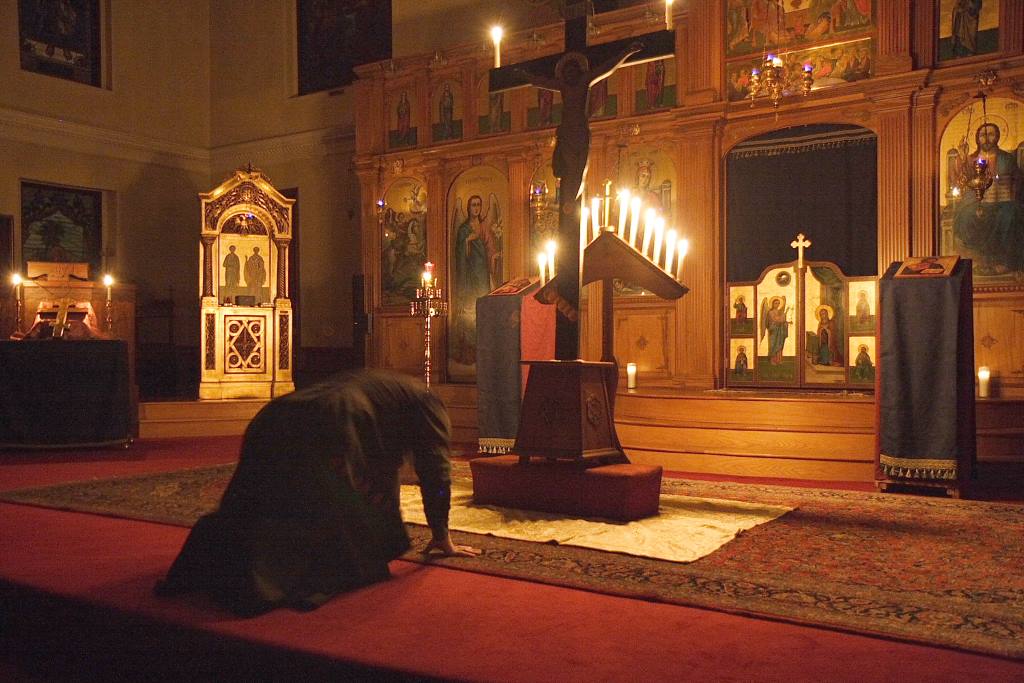by Brent Kostyniuk
When Peter Pan wants to teach Wendy and the other children how to fly, one of the prerequisites is the need to think a happy thought. A happy thought, it is said, will give you wings. For me, there is a happy thought which gives wings to my spirit – it is the Jesus Prayer.
One of the hallmarks of Eastern spirituality is meditation, a discipline brought to near-perfection by the Desert Fathers and Mothers. The Jesus Prayer is a short repetitive prayer, which is profound and deeply mystical. Indeed, in a few short words, it expresses much of our Christian belief, including the need to be humble before God.
Although there are minor variations, the most common form of the prayer is “Lord, Jesus Christ, Son of the living God, have mercy on me a sinner.” The words stem from a number of biblical passages. It was Peter who first acknowledged Jesus. “Simon Peter replied, ‘You are the Christ, the Son of the living God.’” (Matthew 16:16) In the parable of the Publican and the Pharisee it is the publican’s prayer which is pleasing to God. “Lord have mercy on me, a (in some translations the) sinner.” (Luke 18: 13) Also in Luke, Jesus encounters ten lepers who call out to Him from a distance. “Jesus, Master, have mercy on us.” (Luke 17:13)
In the Jesus Prayer, we call on Him to be merciful. Of course, Jesus does not need to be reminded to be merciful. Just as the prodigal son’s father ran out to greet and forgive his lost son long before he had reached home, so too does Jesus constantly shower His mercy without us asking. It is not He who needs reminding, it is we who must be reminded that we are in need of His mercy. The Jesus Prayer does just that. Through constant repetition, it instills the humility needed seek God’s mercy. Like Peter when he began to sink into the sea, we call out to Jesus, “Lord, save me.” (Matthew 14:30) The Jesus prayer can be our hand reaching out to Jesus in time of distress.
The Jesus Prayer is often recited with the aid of a chotki (prayer rope) having anywhere from 50 to 500 knots. When not in use, the prayer rope is traditionally wrapped around the left wrist so that it continues to remind one to pray without ceasing. As well, the Jesus Prayer may be accompanied by the sign of the cross each time it is prayed. As a more profound expression of humility, great prostrations (kneeling down and lowering one’s forehead to the ground) may be done. In this sense, we pray with not only our mind, but our body as well. This action reinforces our goal of humility. For those of us who have reached a certain stage in our lives, great prostrations also reinforce the need for knee replacement surgery!
The second goal of the Jesus Prayer stems from Saint Paul’s appeal to the Christians in Thessalonica. “Rejoice always, pray constantly, give thanks in all circumstances; for this is the will of God in Christ Jesus for you.” (1 Thessalonians 5:16-18) Ultimately, the Jesus Prayer can lead to this. Through persistent use, it is internalized; it becomes a part of your very being. This may seem an impossible goal. However, like all good things, it may come about through habit and perseverance. Many years ago, when I first decided to take up running, my initial goal was to be able to run around the block without stopping. The first time I went out I had to stop twice. A few days later I managed it and within a month could run a mile. I continue to run every day (yes in -35 blizzards) and a strange thing has happened to my body. If, for some reason, I have not gone for my daily run by about 6:00, I get a strange feeling, which, apparently, is similar to the withdrawal symptoms drug users experience. Running has become a part of my essence.
Like the physical discipline of running, the Jesus Prayer is a spiritual discipline. Eventually it can enter into your heart, so there is no longer any effort in reciting it, but it recites itself spontaneously. In this way, we are told, prayer will become as natural as breathing. “Let His most sweet name be joined to your breath; and then you will know the profit of silence,” wrote Gregory the Theologian.
So how does a prayer that is intended to instill humility uplift one’s spirit? Luckily Both Lungs is written from an Eastern perspective, so, like much else, the answer to that question will be consigned to the realm of mysteries.
This piece first appeared in The Prairie Messenger. Reprinted with permission.

